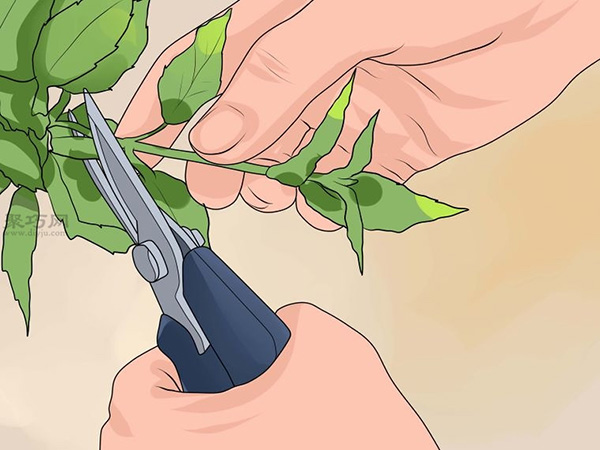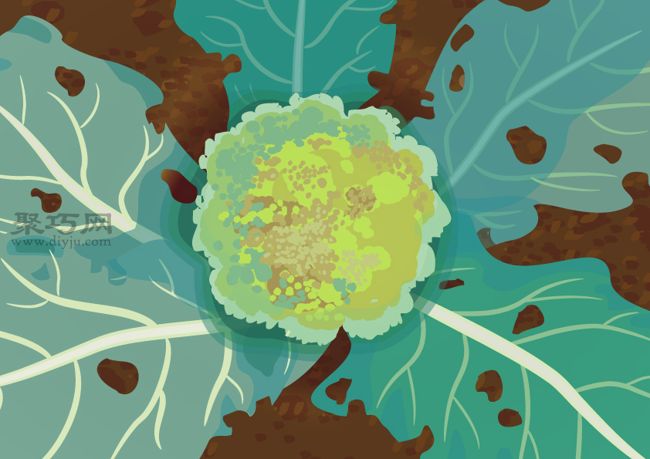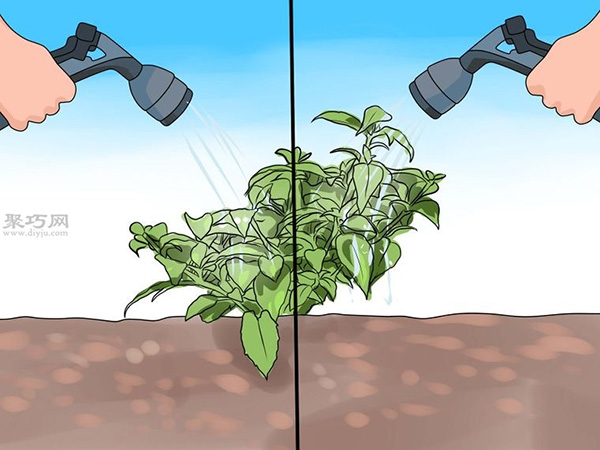How to plant an inverted golden bell and teach you how to plant an inverted golden bell.
In almost any garden, hanging the golden bell upside down can add beauty and vitality to the garden. This plant has blooming flowers, including pink, red, purple, blue, orange and white. This plant usually grows from cuttings or previously planted seedlings, not from seeds.
How to plant an inverted golden bell is part of a series of tutorials that include starting planting, transplanting an inverted golden bell into a garden, daily care, and learning how to plant an inverted golden bell. Learn how to plant an inverted golden bell through Juqiao.
How to plant an upside-down golden bell

Cut the cuttings from a healthy inverted golden bell and choose a stem with at least two pairs of leaves under its growth cone. Cut the stem just above the leaf, 1/3 from the top. The insert should be about 2 to 3 inches (5 to 7.6 cm) long.
Trim the excess leaves with a sharp knife to remove the extra leaves protruding from the leaf nodes and the stems under the leaf nodes.
Soak the cuttings in the rooting agent by quickly soaking the bottom into the powder, adding hormone powder to the stem section. Rooting agents will promote root growth.
Fill the pot combination in a small basin with a well-drained and nutritious combination, such as compost and vermiculite. One insert, using a 2.25-inch (7.5 cm) small basin, or three or four inserts using a 3-inch (7.6 cm) small basin.
Placing cuttings in indirect sunlight requires plenty of light to flourish, but direct sunlight does more harm than good. A good place to put them is under a sunny window with transparent curtains.
Keep the soil moist using a spray bottle and use enough water to keep the surface of the growth medium moist, but do not soak it. If the plant is soaked in water, the stem may rot.
As they grow, the inverted golden clock is transplanted into a larger basin. Once the plant has several stems, its roots should be strong enough to be transplanted. Carefully pry the plants-stems, roots and soil-out of the current container. Transfer each plant to a separate basin, at least 3.5 inches (9 cm). Make sure the basin is filled with the same growth medium.
Note that in addition to planting the upside-down Admiralty cuttings in a small basin and then transplanting them into a larger basin that serves as the "intermediate stage", you can also plant the plant cuttings directly in the intermediate basin. However, you need to pay more attention to proper lighting and irrigation conditions to ensure that the cuttings take root.
Continue to keep the soil moist and provide the same type of sunlight as you provided at the beginning.
Materials that may be used
A sharp knife
Small pot
Pot combination
Spray bottle
Garden hose
Garden mud shovel
Compost
Organic manure
Fertilizer
Pesticides and fungicides, as needed
Covering material
DIY Tips
If you have a mite problem in your garden, you can consider choosing a variety of anti-mite inverted golden bells. Some of these varieties include "Coral Baby", "Fanfare", "First Success" and "Alba".
Matters needing attention
Use liquid pesticides and fungicides in the morning or evening. If you use these products when the sun is hot, it may cause the sun to scorch the leaves. You must also carefully follow any pesticide label instructions to avoid misuse and harm your plant.
Time: 2019-05-08 Click:
- Prev

How to prevent broccoli disease types of diseases and insect pests and control measures
For the growth of delicious broccoli, measures against diseases and insect pests are very important. Here, the editor of Juqiao Network will introduce the types of diseases and pests of broccoli and how to deal with them.
- Next

How to take care of the inverted Golden Bell to see the course of planting the inverted Golden Bell
How to care for the inverted Golden Bell is part of a series of tutorials on planting the inverted Golden Bell. The tutorial also includes starting planting, transplanting the inverted Golden Bell into the garden, and daily care. Want to know how to care for the inverted Golden Bell. Follow the Juqiao Network to see the planting inverted Golden Bell tutorial.
Related
- Fuxing push coffee new agricultural production and marketing class: lack of small-scale processing plants
- Jujube rice field leisure farm deep ploughing Yilan for five years to create a space for organic food and play
- Nongyu Farm-A trial of organic papaya for brave women with advanced technology
- Four points for attention in the prevention and control of diseases and insect pests of edible fungi
- How to add nutrient solution to Edible Fungi
- Is there any good way to control edible fungus mites?
- Open Inoculation Technology of Edible Fungi
- Is there any clever way to use fertilizer for edible fungus in winter?
- What agents are used to kill the pathogens of edible fungi in the mushroom shed?
- Rapid drying of Edible Fungi

